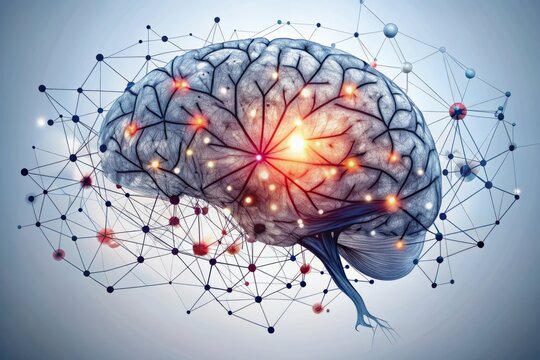Ataxia
Ataxia is a group of neurological disorders characterized by impaired coordination, balance, and speech. The condition can affect various parts of the body, with symptoms that range from mild difficulties in balance to more severe issues that impact daily living. It arises from damage to specific areas of the brain (often the cerebellum), nerves, or spinal cord, and it can be hereditary, acquired, or have an unknown cause (idiopathic).
Symptoms of Ataxia
The symptoms and severity of ataxia vary widely depending on the type and underlying cause. Common symptoms include:
- Impaired Balance and Coordination:
- Difficulty walking or an unsteady gait.
- Frequent falls or stumbling.
- Difficulty with fine motor tasks, such as writing or buttoning clothes.
- Clumsiness:
- Unintended, uncoordinated movements.
- Difficulty with tasks that require precise control.
- Speech Issues (Dysarthria):
- Slurred, slow, or difficult-to-understand speech.
- Changes in the rhythm, tone, and volume of speech.
- Swallowing Problems (Dysphagia):
- Choking or coughing while eating or drinking.
- Potential for aspiration, which can lead to respiratory complications.
- Tremors:
- Uncontrollable shaking in the limbs.
- Involuntary muscle contractions that worsen during movement.
- Fatigue and Tiredness:
- Chronic exhaustion and decreased energy levels.
- Muscle weakness and reduced stamina.
- Vision Problems:
- Difficulty controlling eye movements, resulting in blurred or jumpy vision.
- Double vision or difficulty focusing on moving objects.
Types of Ataxia
1. Hereditary Ataxia
Caused by gene mutations inherited from parents, these types are often progressive, worsening over time:
- Friedreich’s Ataxia:
- The most common form of hereditary ataxia, typically beginning before age 25 but sometimes appearing later.
- Symptoms include difficulty walking, heart disease, and diabetes.
- Spinocerebellar Ataxia (SCA):
- Over 100 subtypes have been identified, each with distinct genetic mutations.
- Symptoms vary widely but often involve balance issues, difficulty speaking, and vision problems.
- Ataxia with Oculomotor Apraxia (AOA):
- Includes AOA1 and AOA2 subtypes, characterized by difficulty with eye movements and progressive muscle weakness.
- Dentatorubral Pallidoluysian Atrophy (DRPLA):
- Primarily affects coordination, balance, and mental functions, often worsening over time.
- Symptoms generally begin in adulthood.
2. Episodic Ataxia
- Rare hereditary type where symptoms occur in episodes or attacks, triggered by factors such as stress, caffeine, alcohol, or physical activity.
- Treatment often involves medication to prevent or reduce episodes.
3. Acquired Ataxia
This type develops due to factors unrelated to inherited genes, such as:
- Brain Injury or Stroke: Damage to the cerebellum or related brain regions.
- Vitamin Deficiency: Low levels of vitamin E, B12, or thiamine.
- Infections: Bacterial or viral infections affecting the brain.
- Chronic Alcohol Abuse: Long-term excessive drinking can lead to ataxia.
- Certain Medications: Side effects from drugs like benzodiazepines.
4. Idiopathic Ataxia
- Occurs without a known cause and represents about 50% of cases.
- Includes subtypes like gluten ataxia, which is triggered by gluten sensitivity.
Causes of Ataxia
The cerebellum, located at the base of the brain, plays a critical role in coordinating movement and balance. Damage to the cerebellum, spinal cord, or peripheral nerves can lead to ataxia. Common causes include:
- Genetic Mutations: Hereditary ataxias are caused by mutations passed down from parents.
- Brain Injury or Stroke: Disrupts signals between the brain and muscles.
- Infections: Conditions like meningitis or viral infections can lead to inflammation of the cerebellum.
- Vitamin Deficiency: Low levels of specific vitamins can impair nerve function.
- Chronic Alcohol Use: Leads to cerebellar degeneration over time.
- Autoimmune Disorders: Conditions like multiple sclerosis can affect nerve function.
Diagnosis of Ataxia
Diagnosing ataxia involves a thorough evaluation by a neurologist, including:
- Medical and Family History:
- A detailed review of symptoms and their progression.
- Assessment of family history to determine if the condition is hereditary.
- Physical Examination:
- Testing balance, coordination, reflexes, and muscle strength.
- Observing speech and eye movement abnormalities.
- Blood and Urine Tests:
- To rule out infections, vitamin deficiencies, or metabolic conditions.
- Imaging Studies:
- CT or MRI Scans: Used to detect brain abnormalities or damage.
- Lumbar Puncture: To analyze cerebrospinal fluid for infections.
- Genetic Testing:
- Identifies specific gene mutations linked to hereditary ataxias.
- Electromyography (EMG) and Nerve Conduction Studies:
- Evaluate electrical activity in muscles and nerve responses.
Treatment Options for Ataxia
1. Treating Underlying Causes:
- Vitamin Supplementation: Correcting deficiencies can improve symptoms.
- Antibiotics or Antivirals: For infections causing ataxia.
- Lifestyle Changes: Reducing alcohol intake, treating thyroid disorders, etc.
2. Symptom Management:
- Speech and Language Therapy:
- Helps with communication difficulties and swallowing issues.
- Occupational Therapy:
- Teaches adaptations for daily tasks and mobility aids.
- Physiotherapy:
- Exercises to maintain strength, flexibility, and reduce muscle stiffness.
- Medications:
- Muscle Relaxants: For spasms or stiffness.
- Medications for Bladder Control: To manage urinary symptoms.
- Pain Management: Neuropathic pain relief with specific drugs.
- Mobility Aids: Use of canes, walkers, or wheelchairs for severe balance problems.
Living with Ataxia
- Supportive Care: Regular check-ups with healthcare professionals, physical therapy, and lifestyle adaptations.
- Dietary Adjustments: Especially for gluten ataxia, a gluten-free diet may be recommended.
- Emotional and Psychological Support: Counseling or therapy to cope with the emotional impact of living with a chronic condition.
Outlook for Ataxia
While there is no cure for most forms of ataxia, many people can manage symptoms and maintain a good quality of life with the right support and treatments. Regular monitoring and personalized care plans are essential for slowing the progression of symptoms and addressing complications.







